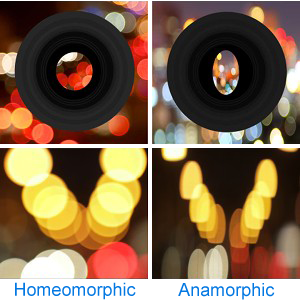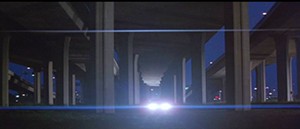Anamorphic

An anamorphic image is one that is captured or processed to distort the natural aspect ratio of the image information. The "squashed" image appears correct only when viewed from a certain angle, through a certain type of lens, or after being procedurally resized. Anamorphic images can be reconstructed at varying aspect ratios without noticeable loss of resolution, or create appealing photographic effects.
In motion picture and still photography, an anamorphic lens captures an image that appears stretched or compressed, until it's projected with a correspondingly anamorphic lens. The result gives a photographic effect and artifacts that are desirable to the photographer or filmmaker.

An example of an anamorphic film is Heat (1995). Cinematographer Dante Spinotti photographed the movie using Panavision anamorphic lenses, creating images where distant spaces are compressed horizontally. Artifacts of the anamorphic lensing include "squashed" bokeh effects (out-of-focus lights that appear as circles or ellipses), and broad horizontal lens flares.
Anamorphism in digitized video
With digital media, such as DVDs, an anamorphic or anamorphic widescreen video is digitized in a way that widescreen video can be encoded on standard-definition media. With the correct hardware, these videos display correctly on 16:9 aspect ratio displays, despite the digital media being intended for 4:3 aspect ratio video.
Anamorphism vs. homeomorphism
The opposite of anamorphic is homeomorphic, where the original image is recorded exactly as it would appear when projected, without intermediate distortion or resizing.
